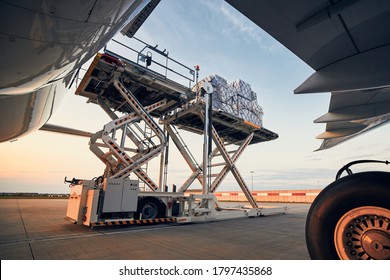- By Della tj
- October 28, 2025
- Customs Brokerage, Shipping
When managing international trade, achieving fast customs clearance from Shenzhen to Spain is essential for maintaining a smooth supply chain. Delays during customs processing can significantly affect delivery schedules, increase shipping costs, and disrupt your import operations. However, with the right documentation, logistics planning, and expert freight support, your goods can pass through Spanish customs efficiently and reach their destination without interruption.
What Makes Customs Clearance Between Shenzhen and Spain Challenging?
Clearing goods through Spanish customs involves more than paperwork; it requires understanding both countries’ trade protocols. Although Shenzhen offers world-class port facilities, any missing declaration or incorrect HS code can result in shipment holds.
Moreover, Spanish authorities require strict compliance with EU import regulations, product labeling, and safety standards. For example, goods such as electronics or textiles must meet CE certification requirements. As a result, failure to comply can cause detention or fines.
To illustrate, a common bottleneck involves delayed submission of commercial invoices and packing lists. Therefore, pre-submission through Spain’s electronic customs system helps ensure smooth clearance.
Why Shenzhen Is a Key Export Hub for Spain-Bound Goods
Shenzhen is one of China’s busiest trade centers, strategically located near the South China Sea. Its deep-water ports—Yantian, Shekou, and Chiwan—handle thousands of export containers weekly.
In addition, Shenzhen’s strong manufacturing base allows exporters to consolidate shipments efficiently before dispatch. This advantage supports fast customs clearance from Shenzhen to Spain because goods can be verified, packed, and documented at the source.
Indeed, the frequent sailings to Spanish ports like Valencia and Barcelona shorten transit times and reduce logistical complexity.
How Long Does Shipping and Clearance Take?
Transit times vary by shipping mode. Typically, sea freight takes longer than air, but the cost difference is substantial. The following table summarizes estimated delivery durations and costs:
| Mode of Transport | Transit Time | Average Cost (USD) | Advantages | Disadvantages |
|---|---|---|---|---|
| Sea Freight (FCL/LCL) | 25–35 days | 1,800–3,200 per 20ft container | Economical for bulk goods | Longer transit duration |
| Air Freight | 4–8 days | 6–10 per kg | Fastest delivery schedule | High cost, limited cargo volume |
| Rail & Multimodal | 18–22 days | 3,000–4,000 per container | Balanced speed and cost | Limited direct routes |
Additionally, clearance time in Spain usually ranges between 24 to 72 hours, provided that documents are correctly submitted in advance.
What Documents Are Required for Fast Customs Clearance?
Proper documentation forms the foundation of efficient clearance. The following table outlines essential paperwork:
| Document | Purpose |
|---|---|
| Commercial Invoice | Declares product value and details for taxation |
| Packing List | Confirms packaging, volume, and weight |
| Bill of Lading / Air Waybill | Serves as proof of shipment and ownership |
| Certificate of Origin | Required for trade agreements and duty benefits |
| Import Declaration (DUA) | Electronic customs filing required in Spain |
| CE / Compliance Certificates | Mandatory for regulated products |
Moreover, using digital pre-clearance systems ensures faster entry processing once the vessel or flight arrives.
Real Case Studies: Efficient Customs Clearance in Practice
Case 1: Shenzhen to Valencia – Household Appliances
Goods: 10 CBM of kitchen appliances (LCL)
Mode: Sea Freight
Cost: USD 1,150
Transit Time: 31 days total
Result: Cleared within 36 hours after electronic submission via Spain’s customs portal.
Case 2: Shenzhen to Barcelona – Electronic Accessories
Goods: 1 FCL (20ft) of mobile accessories
Mode: Sea Freight
Cost: USD 2,400
Transit Time: 28 days total
Result: Fast customs clearance with pre-approved import license and verified CE certificates.
What Factors Affect Customs Clearance Speed?
Several variables influence the clearance timeline:
- Documentation Accuracy: Incorrect or incomplete paperwork leads to immediate delays.
- Type of Goods: Regulated products (medical, chemical, or electronic) undergo additional checks.
- Importer Status: Authorized Economic Operators (AEOs) receive faster processing.
- Customs Duties Payment: Timely payment of taxes accelerates release.
- Inspection Selection: Random checks may slightly extend processing times.
However, using a licensed customs broker ensures your shipments remain compliant and on schedule.
Need a reliable logistics partner? Share your shipment details and we’ll provide a tailored quotation quickly and accurately.
How to Minimize Shipping Costs Without Slowing Clearance
Balancing cost and speed requires strategic choices. The following tips help optimize both:
- Consolidate Shipments: Combine smaller cargo into fewer containers.
- Use Pre-clearance Services: Submit documentation before vessel arrival.
- Work with AEO Partners: Trusted traders gain reduced inspections.
- Plan Off-Peak Shipping: Avoid congested holiday periods.
- Leverage Trade Agreements: Use certificates of origin to reduce duties.
In addition, continuous communication between supplier, forwarder, and consignee avoids confusion and duplication.
Which Shipping Method Is Best for Fast Customs Clearance?
| Mode | Best For | Speed | Reliability | Remarks |
|---|---|---|---|---|
| Air Freight | High-value goods | 4–8 days | Very High | Ideal for urgent shipments |
| Sea Freight (FCL) | Full container loads | 25–32 days | High | Great for bulk shipments |
| Sea Freight (LCL) | Small consignments | 28–35 days | Medium | May delay if consolidation slow |
| Multimodal / Rail | Balanced needs | 18–22 days | Moderate | Cost-efficient alternative |
For most importers, sea freight with proper customs pre-clearance offers the best balance of cost, reliability, and compliance.
Conclusion
In conclusion, achieving fast customs clearance from Shenzhen to Spain depends on strategic preparation, compliance accuracy, and efficient communication. By ensuring complete documentation, choosing the right shipping mode, and partnering with reliable logistics providers, importers can reduce transit time, avoid penalties, and improve delivery performance. For long-term success, integrate customs compliance into your supply chain planning—because fast, reliable clearance is not just a service advantage but a key to sustainable international growth.
Request a Quote
Need a tailored solution for your shipping from China?Let TJ China Freight Forwarder assist you with reliable, cost-effective service.
FAQ:
Q1.How long does customs clearance take in Spain?
Customs clearance in Spain typically takes 24–72 hours when documents and duties are completed correctly before shipment arrival.
Q2.What helps achieve fast customs clearance from Shenzhen to Spain?
Accurate paperwork, correct HS codes, and advance submission through Spain’s electronic customs portal are the most effective strategies.
Q3.Can LCL shipments clear customs as fast as FCL?
Yes, if properly consolidated and documented, LCL shipments can achieve similar clearance times as FCL cargo.
Q4.What documents speed up customs clearance?
Documents like the DUA form, commercial invoice, and certificate of origin ensure faster customs release for Shenzhen-to-Spain shipments.
Q5.Are air shipments faster through customs than sea freight?
Indeed, air shipments usually clear within 24 hours due to express handling, while sea freight may take slightly longer.




